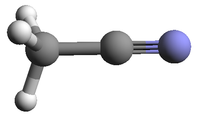|
The first entry from Dec. 2009/May 2011 was already
rather extensive and almost guaranteed to be sufficient
for radio astronomical observations.
(1) L. Nguyen, A. Walters, L. Margulès,
R. A. Motiyenko, J.-C. Guillemin, C. Kahane,
and C. Ceccarelli,
2013, Astron. Astrophys. 553, Art. No. A84;
published additional data between 480 and 940 GHz
employing an isotopically enriched sample. With respect
to earlier measurements in (2), they report mainly
more accurate and more extensive data which also
extend to higher Ka. Some of the
higher Ka data were already excluded
from the fit in (1) because of suspected perturbations
with one or more low-lying vibrational states. Here, all
data above Ka = 14
were omitted, resulting in a somewhat different
parameter set.
(2) H. S. P. Müller, B. J. Drouin, and J. C. Pearson,
2009, Astron. Astrophys. 506, 1487;
provide additional data between 277 and 1197 GHz.
Further data were taken from
(3) M. Le Guennec, G. Wlodarczak, J. Burie, and J. Demaison,
1992, J. Mol. Spectrosc. 154, 305;
and three microwave lines from
(4) L. F. Thomas, E. J. Sherrard, and J. Sheridan,
1955, Trans. Faraday Soc. 51, 619.
The low symmetry of the molecule causes a small
b-dipole moment component. Some of the
corresponding transitions were observed in (1) and (3).
The predictions are reliable up to about
Ka = 14.
Note: Non-trivial
spin-statistics do not matter for this
low symmetry (CS) isotopolog.
Note also that under LTE conditions excited
vibrational states should be observable before
Ka = 10 is.
The dipole moment has been derived from the main
isotopolog, see e041505.cat, taking into account the
rotation of the inertial axes. The magnitude of the
b-component should be taken with some care.
|
